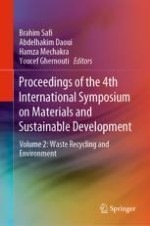This book presents the proceedings of the 4th International Symposium on Materials and Sustainable Development ISMSD2019 (CIMDD2019), will include a 3-day Conference (12 - 14 November). Organized by the Research Unit: Materials, Processes and Environment and M'hamed Bougara University of Boumerdes (Algeria) in partnership with University of Reims - Champagne-Ardenne (France), this symposium follows the success of CIMDD 2013-2015-2017 and continues the traditions of the highly successful series of International Conferences on the materials, processes and Environment. The Symposium will provide a unique topical forum to share the latest results of the materials and sustainable development research in Algeria and worldwide.
